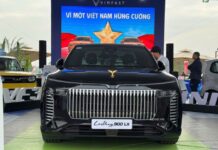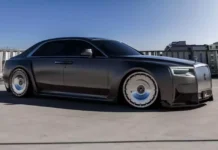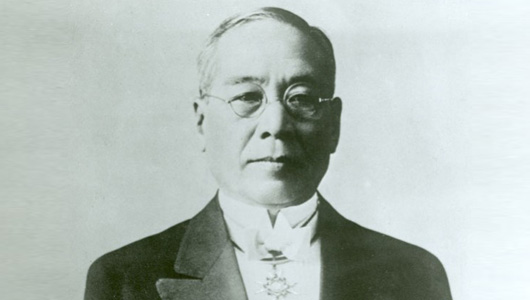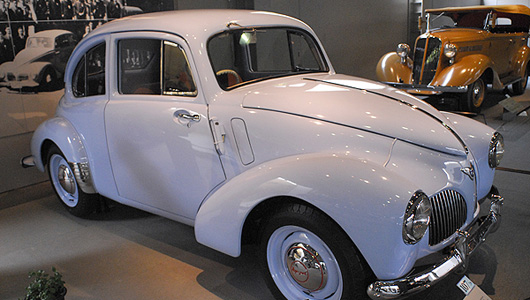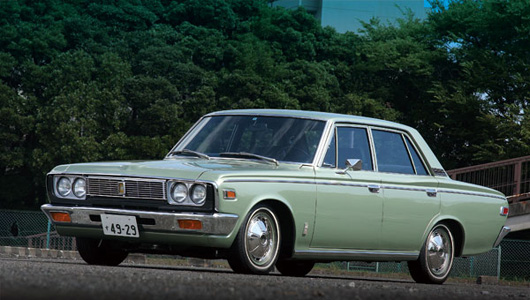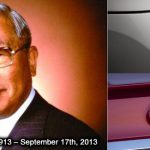When it comes to the Land of the Rising Sun, electronics and automobiles are the first things that come to mind. These two industries are the driving force behind the famous “made in Japan” brand. And the number one automobile manufacturing company in Japan is Toyota.
Toyota made its early appearance in Vietnam with luxurious Toyota Crown cars for high-ranking officials in the 90s. Today, Toyota products have become much more popular, diverse, and abundant. Price, quality, and service are the top priorities for Toyota consumers, so it’s no surprise that about 4 out of every 10 cars on Vietnamese streets bear the Toyota brand.
In the Vietnamese market, Toyota is the leading car company that provides automobiles in various segments. Toyota’s success is built on the combination of business talent and the traditional cultural values of the Japanese people.
From Toyoda to Toyota
The founder of the Toyota Group is Sakichi Toyoda, a talented carpenter from the Land of the Rising Sun. Sakichi Toyoda is best known for being one of the inventors of the first modern weaving machine in Japan.
Not only was he a creative individual, but Sakichi Toyoda also possessed remarkable business acumen. In 1891, he patented his weaving machine. From then on, Sakichi Toyoda became a successful machine manufacturer.
During a trip to the United States to gather information for his automated weaving machine project, Sakichi Toyoda coincidentally discovered that there were many automobiles in America but Japan had none. And when he learned that the Japanese government needed to import 800 Ford cars at once, his national pride was once again ignited.
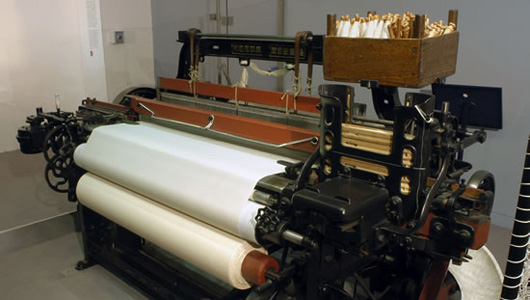
Upon returning to Japan, he shared his thoughts with his son, Kichiro Toyoda. And he agreed to invest a significant amount of money for his son to establish an automobile research center under his management. With determination and unprecedented diligence, embodying the unique qualities of the Japanese people, the Toyoda family continued to manufacture weaving machines while quietly preparing for the first automobile production line in Japan. Starting in 1930, the Toyoda family successively completed the assembly lines for car bodies, chassis, and then car engines.
In 1936, after taking over Sakichi Toyoda’s company, Kichiro decided to change the name to Toyota by replacing the letter “d” with the letter “t” in the name Toyoda. The name “Toyota” is not pronounced the same as Toyoda, but it is more suitable for advertising purposes. Additionally, the word Toyota contains 8 strokes compared to Toyoda’s 10 strokes. In Japanese traditional beliefs, the number 8 brings luck and symbolizes constant growth, while the number 10 is a complete and rounded number, leaving no room for development.
In April 1937, Toyota was officially registered as a trademark. Since then, the Toyota brand has become one of the symbols and pride of every Japanese citizen.
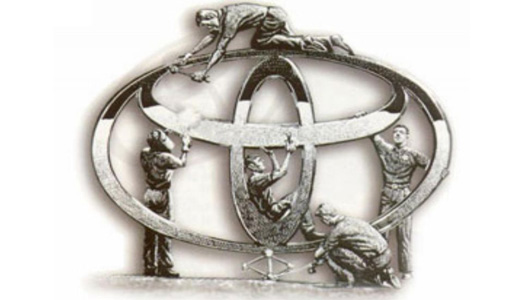
Sakichi Toyoda organized a logo design contest for the new company with the criteria that it had to be easy to understand, depict a domestic company, and contain Japanese sounds. Among the 27,000 logo designs submitted, there was one logo called “Toyota” with a surrounding circle.
Today, the Toyota logo consists of 3 intertwined ellipses (symbolizing 3 hearts) with the following meaning: one represents caring for customers, one represents product quality, and one represents relentless scientific and technological advancements.
Affirming its position
After the devastating years of World War II, Japan was in ruins. Fortunately, the Toyota factories in Aichi prefecture were not bombed to dust. This allowed Toyota to begin its recovery process by producing the first commercial cars named Model SA.
Within 5 years, there were 215 SA Toyopet cars produced. The SD model, a taxi version, may have been more successful with 194 units produced in 2 years. The SF Toyopet model was the first truly popular car made by Toyota with improved engines and an additional taxi version. The RH model with a 48-horsepower engine was introduced shortly afterwards. In addition to these models, Toyota also began producing a pickup truck for ordinary consumers called the Land Cruiser. This marked the beginning of Toyota’s international expansion, starting in 1958 with the export of Land Cruisers and Toyopets to the American market. However, the profit from these ventures was not very promising. In 1959, Toyota opened a factory in Brazil. This was the company’s first factory outside Japan’s territory.
The most important milestone in the company’s history in the American market was the Crown wagon and sedan. Afterwards, Toyota exported many sports cars, mid-size vehicles, and pickup trucks to the United States. Although these cars may not have had the attractive designs of American cars, their quality and safety gradually won over American consumers, in a country with the longest and most developed automobile industry in the world.
Thanks to continuous technological advancements and the growing trend of more sophisticated and fuel-efficient cars, Toyota engineers have been relentlessly researching to create the most valuable “generations” of vehicles. This includes outstanding models such as the Toyota Camry and Innova, which have made a significant impact in the Vietnamese market.
The Land (According to TTTD)

